The Japanese are still one of the worst people in the world.Looking at their diet shows why this is how we can benefit from it.
If we want to lose weight, we usually start with a strict diet and then in a few days or weeks all the strict rules are not enforced.Actually, it's so simple: Let's take a look at the worst people in Japan.
They are there to respect food and enjoy it.
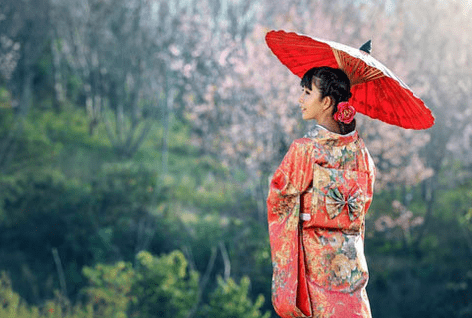
Japanese Diet
Go to Japan.Product selection
manysquirrel: The main ingredients of the Japanese diet are fish, rice and vegetables.and soybeans and fruits.
After careful inspection, it's like
- Rich in protein,
- Low fat
- and a gluten-free diet.
- fishContains many useful omega-3 fatty acids.
- vegetableThey contain the necessary vitamins and fill the stomach well.
- Don't be afraid of carbs: At first glance, the ubiquitous carb phobia seems to be eating incredible white rice in Japan.Obviously, this is not very harmful to the loophole.riceIt contains no gluten and contains fat.
- Soupand fermented milk products.They hardly eat in JapanDairy products.
- AlthoughcerealsSometimes they are used in the form of pasta, not the main food.
- MeatThey eat much less than fish.
- But Japanese people like itEnzyme productsLike flavor or pickled cabbage.They contain probiotics that are useful to the gut.This, in turn, plays a big role in weight loss.And one thing we can adopt from the Japanese: they ate a lot of soup even in breakfast.
Go to Japan.How to cook
In Japan, food is mainly steamed, stewed or roasted.All these types of preparations are carried out with little fat.
Of course, there are fried foods, such as a popular rhythm, but then only a small amount is used as a side dish.In Japan, the presentation and design of this dish is also important.Asian products are useful and delicious and can lead to weight loss.
Eat consciously in Japanese
In Japan, food is considered an independent action that you must focus on.Food should be eaten slowly and consciously and enjoyed.Therefore, traditionally, it is not "by the way" or "go".That is to say, during walking, subway, work, not watching TV.Of course, this is not forbidden, but in reality, diet, especially when losing weight, should be done consciously.Through this method of absorbing food, I feel fullness.Since work days and school days in Japan can be long, this also means that food is resting for a longer time.returnpartIn Japan, few.You won't see a plate full of food.
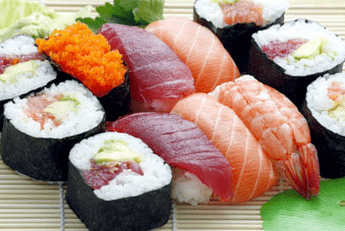
Fast food with weight
Slow food (slow food)Trends in Japan.If you mimic this, you can lose weight on purpose instead of starving.However, it should be noted that there are more and more new trends emerging from the new trend in the west: fast food.The food habits of the past disappear...
This has consequences: Japanese people also recovered when they say goodbye to traditional food!Nevertheless, the country was also in a rather difficult situation in which Japan took decisive measures in 2009 to resist the cause of overweight.Medical testing is performed regularly in all municipalities and large corporations.If an employee is overweight or has high blood pressure, high blood lipids or increases blood sugar, the company should pay more for health insurance.Given such measures, many Japanese prefer to use fish to return to flavor o-supa in the morning rather than toast.
How long does a Japanese diet last?
Time and possible weight loss may vary.Japanese diet should be observed for at least four weeks.This time it's enough to stimulate fat burning.Some people3arrive8Diet is one kilogram in four weeks.If you start a sports program, the results can be increased.
- During the diet, many vegetables and fiber are used.Dietary plan offers1200 caloriesevery day.
- It is mainly rice, fish and vegetables.
- Beverage: Lots of green tea and water.
- Take care of fresh cooking - no finished product.
- Participate in sports or train for endurance.
- Plan cooking time.
Consult a doctor.- Any changes in diet can lead to illness.The reason is mainly mental and due to low consumption.If symptoms are retained, consult your doctor.
Advantages of Japanese Diet
Japanese Diet- This is a healthy and mixed diet.Very focused on fresh products and balanced dishes.
Disadvantages of Japanese diet
- Low calorie consumption, which can lead to hunger and discomfort.For overweight people, the total calorie consumption is even too low.
- Cooking fresh dishes can be tedious in the long run for those who are used to feeding fast food.
- Spontaneously visiting a cafe or a restaurant with friends faces choices.
- Diet requires a lot of endurance.
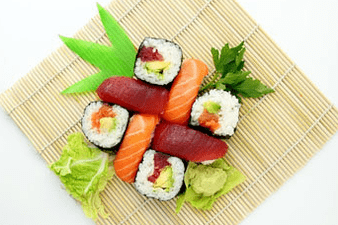
However, those who successfully complete the Japanese diet will get more weight loss.
If you want great success, make a sports plan.Make sure to eat enough protein.Otherwise, you won't be able to increase muscle mass.In the worst case, you will lose muscle.Evil movements and other heavy loads should be avoided.
Japanese diet.menu
All food should be fresh.These dishes are beautifully cooked so you can play with flowers.Food and food enjoyment (slow absorption of food) is also very important.
breakfast
- 1 orange
- 1 cup flavor o.This typical Japanese soup provides a lot of energy but is low in fat.By the way, it consists of fish soup, tofu, algae, flavored o (seasoned soy paste) and green onions.The recipe below!
- 1 cup of green tea
dinner
- 1 plate of land (raw fish with rice), soy sauce
- mushroom
- 1 Apple
- A cup of green tea
dinner
- 1 part sashimi (other fish), soy sauce and barcabi (be careful, this paste made from water is very sharp)
- 1 cup whole grain rice
- 1 Orange
- A cup of green tea
In addition, exercises (walking or cycling) are recommended, as well as the joy of simple and small things.
Now about the "Good Old Times" - Let's travel in time in 1975
The Japanese are one of the healthiest long-term life expectancy in the world, during which time they are still harmful due to exemplary nutrition.Currently, Nippon.com has published a study that demonstrates the reason for good nutrition and good health in Japanese.Nutritionists have studied Japanese eating habits for more than half a century.result:In 1975, Japanese cooking habits were appreciated by the highest evaluation.
Why the 1975 Japanese diet is considered a dietary model
Japanese culture has been influenced by the Western world for decades, especially the spread of Western power habits in the country, and has also brought about diseases such as atherosclerosis and diabetes.Japanese studies on the diet of mice have been tested for decades - 2005, 1990, 1975 and 1960.
result:Since 1975, the mouse has the best health status in its diet plan in Japan.This group of mice had the lowest risk of developing diabetes and healthy liver.
reason:During this year, the average Japanese diet plan contains a lot of vegetables, fruits, algae and seafood.In addition, in 1975, the diet was dominated by various fermented spices and more types of herbs.Furthermore, the consumption of juice and sweet soft drinks in Japan at that time was not as common as it is today – both beverages were considered harmful to a large amount of health.
Over the 48-week period, the researchers found that mice powered by the 1975 Japanese diet were older and had better memory than mice watching the 2005 diet.
But can these results be conveyed to people?A study conducted by the Research Ethics Committee of Tokhoki University in Sendai, Japan, "Research Ethics Committee", Der Tōhoku Uni of Sendai, proved that the 1975 diet had the same beneficial effect on people.During the 28-day period, a group of participants who followed the 1975 diet exceeded the metrics of those who followed the 2005 food plan.In the first group, cholesterol and diabetes risk was lower.Combined with training 3 times a week, the 1975 diet also reduced the endurance of participants aged 20 to 30.Generally, Japanese-style nutrition can also help lower lipid levels in blood and visceral fats, which are considered harmful to health due to their metabolic activity.
In summary, we can sayThe Power of Japan 1975Compared to modern nutrition in Japan, and for the West, today's eating habits are more useful in many ways.This healthier lifestyle and nutrition can lower the risk of diabetes, and cholesterol is a positive side effect in the long run, reducing blood lipids and visceral fat, and weight loss is a positive side effect.
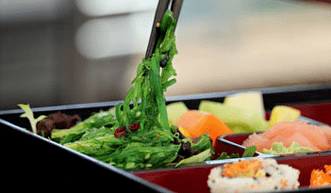
Diet and regular physical exercise in 1975 can lead to weight loss.
- Diversity:The daily menu is usually composed of many small dishes that are eaten with soup and rice – not a large entree.
- Prepare:The three most popular dishes prepared in 1975 were cooked, steamed or raw, and roasted.Free heat and baking are used less frequently.The result of this formulation form is that the most important nutritional value is lost in the calories.For example, oily fish (such as COD) contain important omega-3 fatty acids.After frying, the fish contains only one-third of the initial fat compared to raw fish.
- raw material:The 1975 diet was particularly rich, rich in soy products, seafood, tubers and green and yellow vegetables (including rnicons), fruits, algae, mushrooms and green tea.Eggs, dairy and meat were also consumed in 1975, but only in medium quantities.
- spices:Use soy sauce, vinegar and sake instead of salt and sugar, but fermented spices and fish soup.
Soup flavor- This is a national dish from Japan, quickly prepared and very fragrant.The main recipe contains few ingredients - you can enrich it as you like.In Japan, you often eat a breakfast of O, but it can also be eaten as a snack or side dish.With the filling, the soup becomes the main course.
As the basis of the soup, you only need two ingredients:
Mizopasta:This spicy paste consists of soybeans, depending on the variety of various grains, such as rice or barley.With the help of Coji's So mold, the ingredients are marinated and fermented in a barrel.It has a light, dark, sweet and sharp flavor.Therefore, the choice of variety has a great impact on the taste of the O-Soup.Mizopasta is considered very useful because it contains the probiotic lactic acid bacteria that form during fermentation.Dasha:Japanese fish soup is prepared from seaweed fighting and dry Bonito slices (type of mackerel or tuna: "Katsuo-Bushi" - "Katsuo-Busi").If you want to cook a vegetarian soup with Oo, you can use dried shiitaka, maybe Maitaka or Enoki’s mushrooms instead of Bonito Flakes.
Mio Soup: Basic Recipe
For four small portions of flavored o soup, you will need the following ingredients:
- Dasha's 750ml
- About two or three tablespoons of flavored pasta
Use the flavor of your choice: In addition to soy, Shiro-Miso also contains rice and has a soft and sweet taste.The light flavour of Moss (Genmai or Hatcho Miso) is even more spicy.
How to cook flavored soup
-
Heat Dasha's broth - but not cook.
-
Skip the flavor through the sieve and mix well with the broth.First, only a part of the quantity is used, because the paste tastes very salty.Try the soup and add more flavored paste if necessary.
-
Add the ingredients of your choice within a few minutes before serving.Put the finished soup into a bowl.By the way, in Japan, the soup had a food stick and the soup got drunk from the cup.
Mio Soup Recipe: Additives and Seasonings
For soups, you can prepare different ingredients.In Japan, people are very concerned about the fact that the ingredients are evenly cut - so the finished soup looks very beautiful.Here are some examples that enrich your soup flavor:
- Cooking or paste (for example, noodle from buckwheat dog)
- Cut tofu into thin slices
- Onion or green onion, cut into thin rings
- Mushrooms, chopped
- Kohlrabi, chopped
- Snow
- Leaf Spinach, Park Choi or Mangold
- Fried vegetables such as broccoli, pepper or carrot
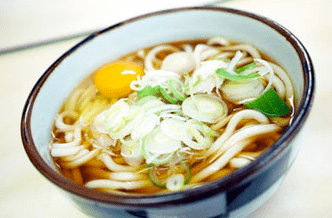
Although the soup of the flavour itself is very sharp, it can be seasoned with several spices.For example:
- soy sauce
- A bit like lime
- Japanese wosterhire sauce
- A few drops of sesame oil
- A little ginger and/or chili powder.
- You can also slice fresh ginger and/or pepper and put it in the soup.
suggestion:For many ingredients you have to go to Asian stores, but in regional markets you can buy fresh onions, mushrooms, Kohlrabi and Co.
Tofu and other soy products are now also produced in other countries.
Japaneseeat:
- Rice, fish (raw and cooked), vegetables, all and algae
- Small part
- Various foods (up to 30 different foods per day)
- Breakfast soup, fish, rice, vegetables
- Fresh seasonal original product
Almost no dessert or bread
Mainly drinking green tea
Don't fry with oil, just fry with a little vegetable oil
They go on a lot of bike rides
Top three products
Rice/fish (algae)/soy (tofu)
Drink: Green Tea
Another secret in Japanese
Want to get thinner at 12 cm?- If so, do the following breathing exercises!
Important!
- Perform every day!
- Show before breakfast!
- Never worry!
- The feet will be placed at a convenient distance to each other.Of course the knees "look forward".
- Move the weight of the body to the hind legs and straighten the front.
- Inhale for 3 seconds.
- Exhale for 7 seconds.Relax muscles.Tear your hands open.
Exercise is performed at the start of 3 minutes and then increase the time to 10 minutes.














































































